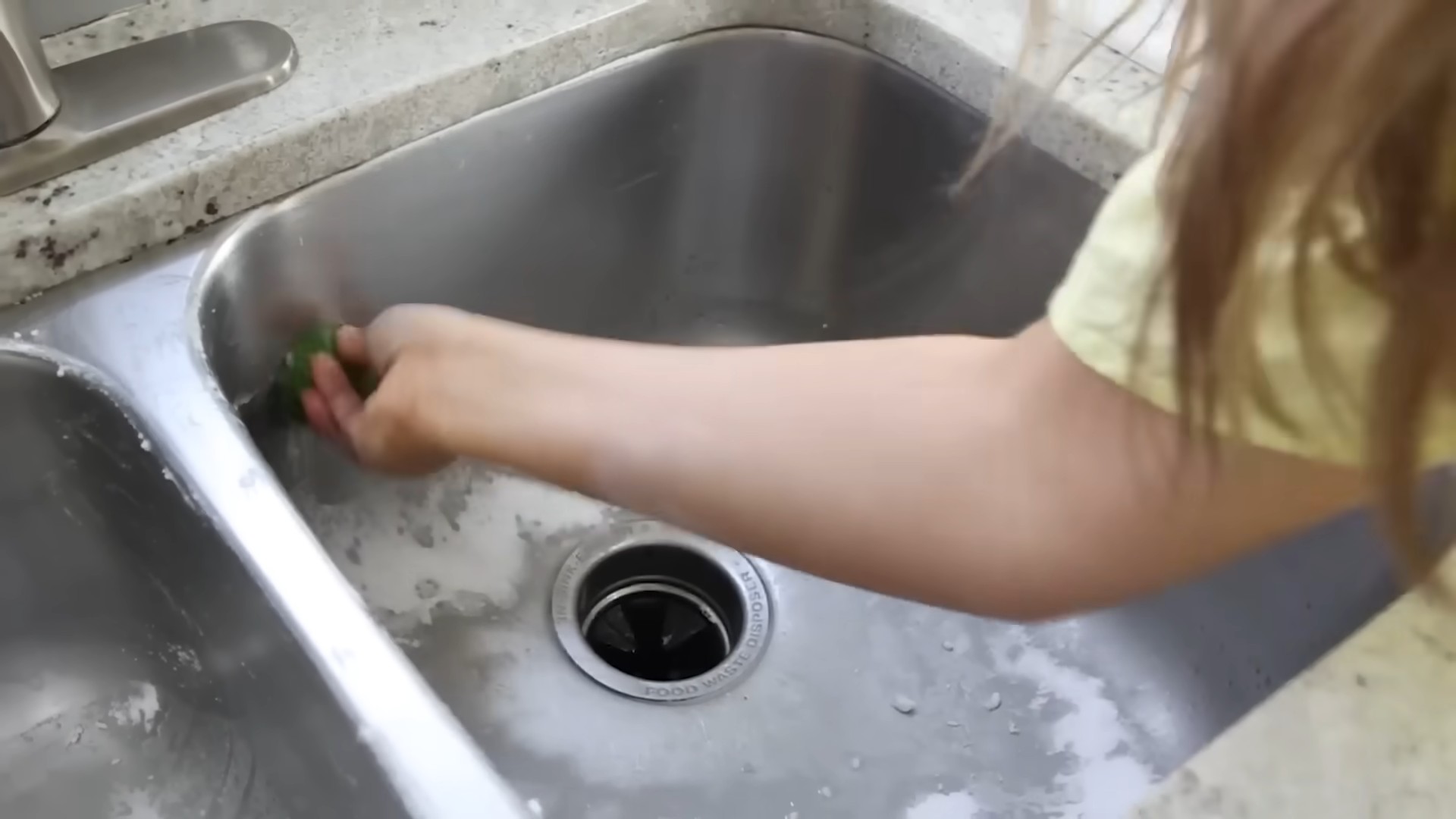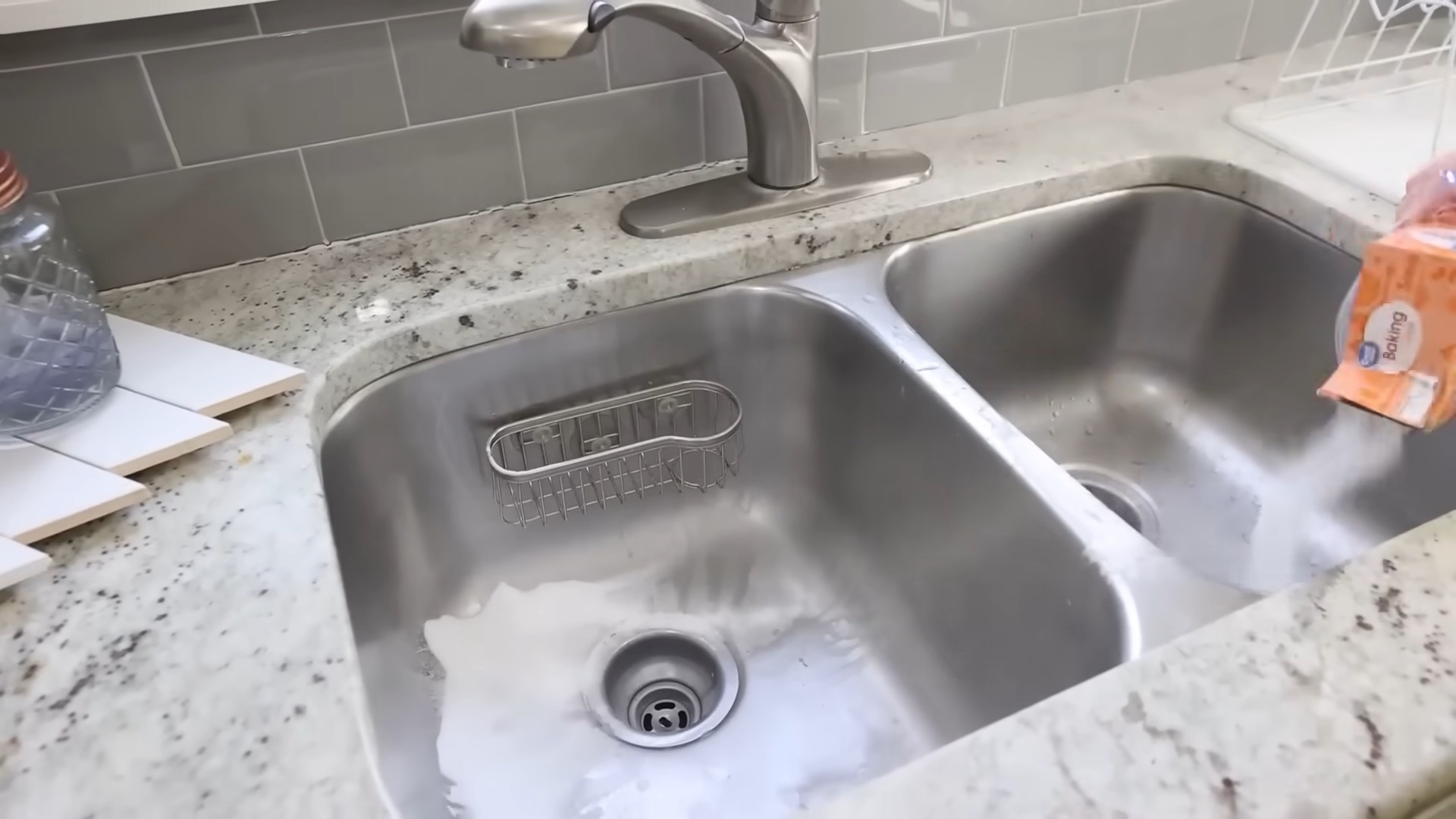Quick Lime Cleaning Method: Unlock the secrets to a sparkling home with this age-old cleaning marvel! Have you ever wondered how our ancestors kept their homes fresh and sanitized without the plethora of chemical cleaners we have today? The answer, in many cases, lies in the humble yet powerful quick lime. For centuries, across various cultures, quick lime has been used for its incredible disinfecting and deodorizing properties. From ancient Roman sanitation practices to traditional methods of whitewashing homes in rural communities, quick lime boasts a rich history as a natural cleaning agent.
But why should you, in this modern age, consider incorporating a quick lime cleaning method into your routine? Well, for starters, it’s an incredibly effective and eco-friendly alternative to harsh chemicals. Many commercial cleaners contain ingredients that can be harmful to your health and the environment. Quick lime, when used correctly, offers a natural and powerful way to tackle tough cleaning tasks, from disinfecting surfaces to eliminating stubborn odors. Plus, it’s surprisingly affordable! I’m excited to share some simple and effective DIY tricks using quick lime that will leave your home feeling fresh, clean, and naturally sanitized. Let’s dive in and discover the magic of this time-tested cleaning solution!

DIY Quick Lime Cleaning Power: Revive Your Home!
Hey there, fellow DIY enthusiasts! Are you tired of stubborn stains, grime, and buildup plaguing your home? Well, I’ve got a fantastic, cost-effective solution for you: quick lime cleaning! Now, before you get intimidated, let me assure you, it’s not as scary as it sounds. With the right precautions and a little elbow grease, you can harness the incredible cleaning power of quick lime to tackle a variety of household messes.
Important Safety First!
Before we dive in, I want to emphasize the importance of safety when working with quick lime (calcium oxide). It’s a caustic substance, meaning it can cause burns and irritation if it comes into contact with your skin, eyes, or respiratory system.
* Always wear appropriate safety gear: This includes gloves (heavy-duty rubber or nitrile), eye protection (goggles or a face shield), and a dust mask or respirator.
* Work in a well-ventilated area: Avoid breathing in the dust or fumes. Open windows and doors, or use a fan to circulate the air.
* Never mix quick lime with acids: This can create dangerous fumes.
* Keep quick lime out of reach of children and pets.
* If quick lime comes into contact with your skin or eyes, rinse immediately with plenty of water and seek medical attention.
Understanding Quick Lime and Its Cleaning Properties
Quick lime, also known as calcium oxide (CaO), is produced by heating limestone. When you add water to quick lime, it undergoes a chemical reaction called slaking, which produces hydrated lime (calcium hydroxide, Ca(OH)2). This hydrated lime is what gives quick lime its cleaning power. It’s highly alkaline, which means it can effectively dissolve grease, grime, and organic matter.
What Can You Clean with Quick Lime?
Quick lime is incredibly versatile and can be used for a variety of cleaning tasks around the home. Here are a few examples:
* Cleaning drains: Quick lime can help dissolve grease and hair that clog drains.
* Removing mildew and mold: Its alkaline properties can kill mold and mildew spores.
* Whitewashing walls: Quick lime can be used to create a traditional whitewash finish that is both decorative and antimicrobial.
* Cleaning septic tanks: Quick lime can help break down organic waste in septic tanks.
* Disinfecting surfaces: Its high pH can kill bacteria and viruses.
* Cleaning animal pens and coops: It helps neutralize odors and disinfects.
DIY Quick Lime Cleaning Guide: Step-by-Step Instructions
Okay, let’s get down to the nitty-gritty! I’ll walk you through the process of using quick lime for cleaning, step by step. Remember to always prioritize safety and wear your protective gear.
Section 1: Preparing the Quick Lime Solution
1. Gather your materials: You’ll need quick lime (available at hardware stores or agricultural supply stores), a large bucket (plastic or metal), water, a stirring stick (wood or metal), gloves, eye protection, and a dust mask.
2. Choose your location: Select a well-ventilated area outdoors or in a garage with open doors and windows.
3. Add water to the bucket: Pour a sufficient amount of water into the bucket. The amount of water will depend on the concentration of the solution you want to create. A good starting point is a ratio of 1 part quick lime to 3 parts water.
4. Slowly add quick lime to the water: This is crucial! Never add water to quick lime, as it can cause a violent reaction. Slowly add the quick lime to the water while stirring continuously. The mixture will heat up and start to bubble.
5. Stir the mixture thoroughly: Continue stirring until the quick lime is completely dissolved and the mixture has a milky consistency. Be patient, as this may take a few minutes.
6. Let the solution cool: Allow the solution to cool down completely before using it. This will take several hours. The solution will become less reactive as it cools.
7. Strain the solution (optional): If you want a smoother solution, you can strain it through a cheesecloth or fine-mesh sieve to remove any undissolved particles.
Section 2: Cleaning Different Surfaces with Quick Lime
Now that you have your quick lime solution ready, let’s explore how to use it for different cleaning tasks.
A. Cleaning Drains:
1. Pour the quick lime solution down the drain: Slowly pour about 1 cup of the quick lime solution down the clogged drain.
2. Let it sit for several hours or overnight: Allow the solution to sit in the drain for at least several hours, or preferably overnight, to dissolve the clog.
3. Flush with hot water: After the soaking period, flush the drain with plenty of hot water to remove the dissolved debris.
4. Repeat if necessary: If the drain is still clogged, repeat the process.
B. Removing Mildew and Mold:
1. Apply the quick lime solution to the affected area: Using a brush or sponge, apply the quick lime solution to the mildewed or moldy surface.
2. Let it sit for 15-30 minutes: Allow the solution to sit on the surface for 15-30 minutes to kill the mold and mildew spores.
3. Scrub the surface: Use a scrub brush to scrub the surface and remove the mold and mildew.
4. Rinse thoroughly with water: Rinse the surface thoroughly with clean water to remove any remaining quick lime residue.
5. Dry the surface: Allow the surface to dry completely.
C. Whitewashing Walls:
1. Prepare the wall: Clean the wall thoroughly to remove any dirt, dust, or loose paint.
2. Apply the first coat of whitewash: Using a brush or roller, apply a thin, even coat of the quick lime solution to the wall.
3. Let it dry completely: Allow the first coat to dry completely before applying the second coat. This may take several hours or overnight.
4. Apply a second coat (optional): If you want a more opaque finish, apply a second coat of whitewash.
5. Let it dry completely: Allow the second coat to dry completely.
D. Cleaning Animal Pens and Coops:
1. Remove all animals and bedding: Before cleaning, remove all animals and bedding from the pen or coop.
2. Sweep or scrape away loose debris: Sweep or scrape away any loose debris, such as manure or feathers.
3. Apply the quick lime solution to the surfaces: Using a brush or sprayer, apply the quick lime solution to all surfaces of the pen or coop, including the walls, floor, and perches.
4. Let it sit for several hours: Allow the solution to sit on the surfaces for several hours to disinfect and neutralize odors.
5. Rinse thoroughly with water: Rinse all surfaces thoroughly with clean water to remove any remaining quick lime residue.
6. Allow the pen or coop to dry completely: Allow the pen or coop to dry completely before returning the animals.
Section 3: Important Considerations and Tips
* Test the solution on an inconspicuous area first: Before applying the quick lime solution to a large area, test it on a small, inconspicuous area to ensure that it doesn’t damage the surface.
* Avoid using quick lime on delicate surfaces: Quick lime can be too harsh for delicate surfaces such as marble, granite, or painted surfaces.
* Neutralize the solution after cleaning: After cleaning with quick lime, you can neutralize the solution by rinsing the surface with a mild acid, such as vinegar or lemon juice. This will help to prevent any lingering alkalinity.
* Dispose of leftover quick lime solution properly: Do not pour leftover quick lime solution down the drain or into the environment. Instead, neutralize it with vinegar or lemon juice and then dispose of it in accordance with local regulations.
* Store quick lime in a dry, airtight container: Store quick lime in a dry, airtight container to prevent it from reacting with moisture in the air.
* Be patient: Quick lime cleaning may require some patience, especially for stubborn stains or clogs. Don’t be afraid to repeat the process if necessary.
* Consider the environmental impact: While quick lime is a natural product, its production does have an environmental impact. Consider using it sparingly and exploring other eco-friendly cleaning options when possible.
Troubleshooting Common Issues
* The quick lime isn’t dissolving: Make sure you’re adding the quick lime to the water slowly and stirring continuously. The water should be warm, but not hot. If the quick lime still isn’t dissolving, try using a different brand or batch.
* The solution is too strong: If the solution is too strong, it can damage

Conclusion
So, there you have it! This quick lime cleaning method is more than just a cleaning hack; it’s a game-changer for anyone looking to tackle stubborn grime and stains without resorting to harsh chemicals. We’ve walked you through the simple steps, highlighting the effectiveness and ease of using quick lime for a variety of cleaning tasks. From revitalizing your grout to banishing rust, the versatility of this method is truly remarkable.
Why is this a must-try? Because it’s effective, affordable, and environmentally conscious. In a world saturated with expensive and often toxic cleaning products, quick lime offers a natural and powerful alternative. It’s a return to simpler, more sustainable cleaning practices that deliver exceptional results. Plus, the satisfaction of seeing years of built-up grime disappear before your eyes is incredibly rewarding.
But don’t just take our word for it. We encourage you to experiment and discover the full potential of this cleaning marvel. For instance, if you’re dealing with particularly stubborn stains on concrete, try creating a thicker paste of quick lime and water, allowing it to sit for a longer period before scrubbing. Or, if you’re cleaning delicate surfaces, dilute the quick lime solution further and test it on an inconspicuous area first. You can even add a few drops of your favorite essential oil, like lemon or lavender, to the quick lime solution for a fresh and natural scent. Remember to always wear protective gear like gloves and eye protection when handling quick lime.
The possibilities are endless, and we’re eager to hear about your experiences. Did you use this method to clean your patio furniture? Did it work wonders on your stained kitchen sink? Share your tips, tricks, and before-and-after photos in the comments below! Let’s build a community of quick lime cleaning enthusiasts and discover even more innovative ways to harness the power of this natural cleaner. Don’t be afraid to get creative and adapt the method to suit your specific needs. The key is to experiment and find what works best for you.
Ultimately, this quick lime cleaning method is about more than just achieving a sparkling clean home. It’s about embracing a more sustainable and mindful approach to cleaning, one that prioritizes both effectiveness and environmental responsibility. So, ditch the harsh chemicals and give quick lime a try. You might be surprised at just how powerful and versatile this natural cleaner can be. We are confident that once you experience the cleaning power of quick lime, you’ll never look at cleaning the same way again. It’s time to unlock the cleaning potential of this age-old remedy and enjoy a cleaner, healthier, and more sustainable home.
Frequently Asked Questions (FAQ)
What exactly is quick lime, and is it safe to use?
Quick lime, also known as calcium oxide (CaO), is a chemical compound produced by heating limestone. It’s a powerful alkaline substance that reacts vigorously with water. When used correctly and with proper precautions, it can be a safe and effective cleaning agent. However, it’s crucial to handle quick lime with care. Always wear gloves and eye protection to prevent skin and eye irritation. Avoid inhaling the dust, and ensure adequate ventilation when using it indoors. Keep it out of reach of children and pets. While quick lime is a natural substance, its alkaline nature means it can be corrosive, so responsible handling is essential.
Can I use quick lime on all surfaces?
No, quick lime is not suitable for all surfaces. Avoid using it on delicate materials like painted surfaces, polished stone, aluminum, or wood, as it can cause damage or discoloration. It’s best suited for cleaning durable surfaces like concrete, brick, tile, grout, and some metals (like iron and steel, but test first). Always test the quick lime solution on an inconspicuous area before applying it to the entire surface to ensure it doesn’t cause any adverse reactions. If you’re unsure about a particular surface, err on the side of caution and choose a different cleaning method.
How do I properly dispose of quick lime residue after cleaning?
After cleaning with quick lime, it’s important to dispose of the residue properly. Neutralize the quick lime solution by diluting it with plenty of water. You can then pour the diluted solution down the drain, provided your plumbing system is compatible with alkaline solutions (check local regulations). For solid residue, allow it to dry completely and then dispose of it in a sealed container in your regular trash. Avoid pouring undiluted quick lime down the drain or disposing of it in a way that could contaminate the environment.
What is the best ratio of quick lime to water for cleaning?
The ideal ratio of quick lime to water depends on the specific cleaning task and the severity of the grime. For general cleaning, a ratio of 1 part quick lime to 3-4 parts water is a good starting point. For more stubborn stains, you can create a thicker paste by using a ratio of 1 part quick lime to 1-2 parts water. Remember to always add the quick lime to the water slowly and stir continuously to avoid splattering. It’s better to start with a weaker solution and gradually increase the concentration as needed, rather than starting with a strong solution that could potentially damage the surface.
Can I use hydrated lime (slaked lime) instead of quick lime?
While both quick lime and hydrated lime (calcium hydroxide) are derived from limestone, they are not interchangeable for all cleaning purposes. Quick lime is more reactive and has a stronger cleaning power than hydrated lime. Hydrated lime is already reacted with water, making it less potent. While hydrated lime can be used for some cleaning tasks, it may not be as effective as quick lime for removing stubborn stains and grime. If you’re looking for the most powerful cleaning action, quick lime is generally the preferred choice. However, hydrated lime can be a gentler alternative for more delicate surfaces or for tasks that don’t require as much cleaning power.
How long should I let the quick lime solution sit on the surface before scrubbing?
The amount of time you should let the quick lime solution sit on the surface depends on the type of stain and the surface material. For light stains, 5-10 minutes may be sufficient. For more stubborn stains, you may need to let it sit for 30 minutes to an hour, or even longer. However, it’s important to monitor the surface closely and prevent the solution from drying out completely. If the solution starts to dry, reapply it or lightly mist it with water to keep it moist. Avoid letting the solution sit for extended periods on delicate surfaces, as it could cause damage.
What kind of scrubbing brush should I use with quick lime?
The type of scrubbing brush you use with quick lime depends on the surface you’re cleaning. For rough surfaces like concrete or brick, a stiff-bristled brush is ideal for removing stubborn grime. For tile and grout, a nylon-bristled brush is a good choice. Avoid using metal brushes on surfaces that are prone to scratching. Always test the brush on an inconspicuous area first to ensure it doesn’t damage the surface. Remember to rinse the brush thoroughly after each use to remove any quick lime residue.
Is there a specific type of quick lime I should look for?
When purchasing quick lime for cleaning, look for high-quality, pure quick lime (calcium oxide). Avoid products that contain additives or impurities, as these could interfere with the cleaning process or damage the surface you’re cleaning. Check the product label to ensure it’s specifically labeled as quick lime or calcium oxide. You can typically find quick lime at hardware stores, building supply stores, or online retailers.
Can I mix quick lime with other cleaning agents?
It’s generally not recommended to mix quick lime with other cleaning agents, especially those containing acids or ammonia. Mixing quick lime with these substances can create dangerous chemical reactions and release harmful fumes. Stick to using quick lime on its own, following the instructions provided. If you’re unsure about mixing quick lime with a particular cleaning agent, err on the side of caution and avoid it.
What are the long-term benefits of using quick lime for cleaning?
Beyond its immediate cleaning power, using quick lime offers several long-term benefits. It’s a more sustainable and environmentally friendly alternative to harsh chemical cleaners. It can help prevent the growth of mold and mildew, thanks to its alkaline properties. It’s also a cost-effective cleaning solution, as a small amount of quick lime can go a long way. By choosing quick lime, you’re not only achieving a cleaner home but also contributing to a healthier and more sustainable environment.




Leave a Comment